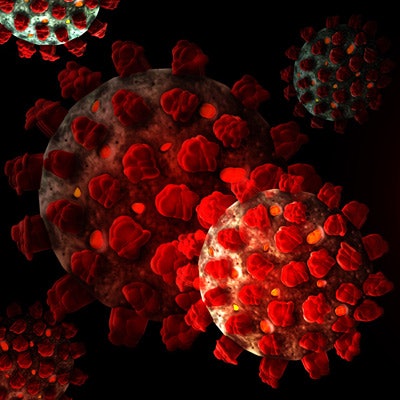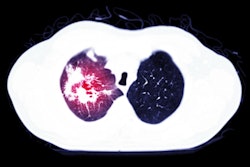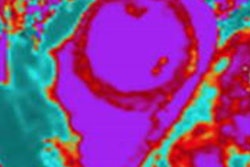
The recombinant, soluble form of a protein that acts as the receptor for SARS-CoV-2 -- the angiotensin-converting enzyme 2 (ACE2) protein -- shows promise, according to a plenary talk given on 4 March at ECR 2021. But don't throw your mask out yet, the speaker warned.
ACE2 attaches to cells in the lungs, arteries, heart, kidney, and intestines, said Josef Penninger, PhD, director of the Life Sciences Institute at the University of British Columbia and of the Institute of Molecular Biotechnology at the Vienna Biocenter. Penninger and colleagues have worked with ACE2 for decades, and he described at ECR 2021 how a recombinant, soluble form of ACE2 they've developed shows promise as a front-line therapy for COVID-19.
"Soluble ACE2 binds to the [virus's] spike protein and thereby prevents binding to [the body's] ACE2 at the membrane and virus entry," he said. "[The result is] less virus internalization and a reduced viral load by 1,000 to 5,000 times."
ACE2's connection to coronaviruses was demonstrated in the first global outbreak of severe acute respiratory syndrome (SARS) in 2003, which manifested as a viral respiratory disease caused by a coronavirus. When SARS-CoV-2 emerged in 2019, Penninger and his research partners quickly ascertained that ACE2 is also instrumental in how it infects its hosts.
"[We've been told] it's beautiful work you've been doing, but it's irrelevant now because SARS has disappeared from the world," he said. "Of course, then SARS-CoV-2 appeared and it was immediately clear that it also uses ACE2 as its receptor."
The recombinant, soluble form of human ACE2 shows potential for therapeutic use for conditions such as sepsis, gastric acid aspiration, and avian flu, and it seems likely it could also mitigate SARS-CoV-2 infections, acting like a "molecular sponge" and preventing the virus from finding a receptor, according to Penninger.
"Soluble ACE2 binds to the [virus's] spike protein and thereby prevents binding to ACE2 at the membrane and virus entry," he said. "[The result is] less virus internalization and a reduced viral load -- by 1,000 to 5,000 times."
Session moderator and ESR President Dr. Michael Fuchsjäger asked Penninger what ACE2's potential for COVID-19 disease reduction could mean for the world going forward. Will it be a "game changer"?
Yes, ACE2 therapy is promising, Penninger said. But don't throw your mask out just yet.
"[To get to a new normal will require] a mix of public health measures like wearing masks and washing hands, plus vaccines and combination therapies that [are tailored] to early, middle, and late-stage disease," he said. "There's no single drug that will be strong enough to block SARS-CoV-2. It's a vicious virus."



















